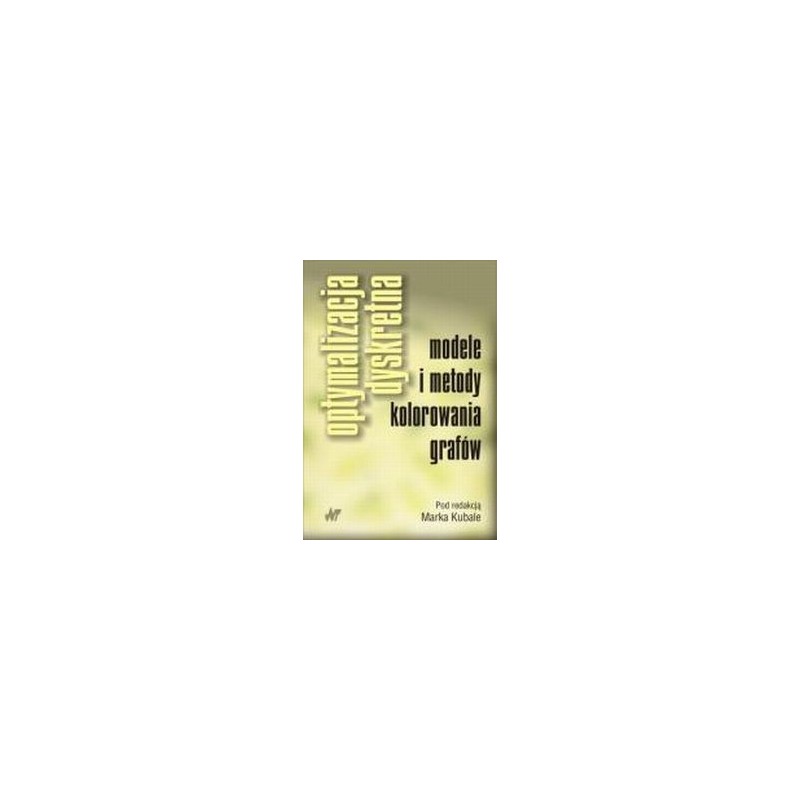- Out-of-Stock



Table of Contents
Chapter 1. Classic coloring of graphs 1 (Krzysztof Manuszewski) 2
1.1. Basic concepts and definitions 2Chapter 2. Metaheuristics in graph coloring (Dariusz Szyfelbein) 26
2.1. Introduction 27Chapter 3. Coloring in online mode (Piotr Borowiecki) 53
3.1. On-line coloring and coloring with? -Line 54Chapter 4. Fair Coloring of Graphs (Hanna Furmańczyk) 72
4.1. Fair vertigo coloring 72Chapter 5. Summary coloring of graphs (Michał Małafiejski) 93
5.1. Definitions and basic properties of chromatic sum 93Chapter 6. Contrasting graph coloring (Robert Janczewski) 112
6.1. Spans 112Chapter 7. Harmonical graph coloring (Marek Kubale) 132
7.1. Introduction 133Chapter 8. Circular graph coloring (Adam Nadolski) 147
8.1. Circular coloring of vertices 147Chapter 9. The compact edge coloring (Krzysztof Giaro) 167
9.1. Basic properties of the 168 modelChapter 10. Coloring paths in graphs (Jakub Białogrodzki) 190
10.1. Definition of path coloring 191Chapter 11. Letter coloring of graphs (Konrad Piwakowski) 209
11.1. Basic definitions and properties 210Chapter 12. Ramsey coloring of solid graphs (Tomasz Dzido) 225
12.1. Basic designations and declarations 226Chapter 13. Planning the location of guards in art galleries by method
graph coloring (Paweł Żyliński) 245
13.1. Introduction 245 No product available!
No product available!
No product available!
The assembled and activated module is designed to control differently colored LEDs. AVTMOD02
No product available!
OV5647 Camera Board with LS-40180 Fisheye Lens M12x0.5 Mount for Raspberry Pi 3. ArduCam B0055
No product available!
Easy-to-use and intuitive 3D printer with a touch screen and USB, WiFi and cloud file transfer support. The printer is fully assembled and ready to use. Flashforge Adventurer 3
No product available!
MicroHDMI-HDMI cable in black and 2 meter length. It has a gold plated plug.
No product available!
No product available!
SmartLED Shield driver (V4) for SmartMatrix series displays, for use with Teensy 3.2, Teensy 3.5 and Teensy 3.6. It is also possible to connect LED Dotstar or APA102 displays. Adafruit 1902
No product available!
No product available!
No product available!
No product available!
No product available!
Development kit with AVR ATtiny2313 microcontroller
No product available!
No product available!
No product available!

